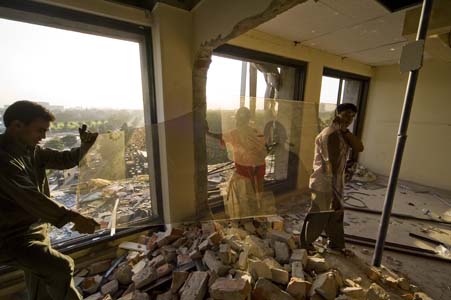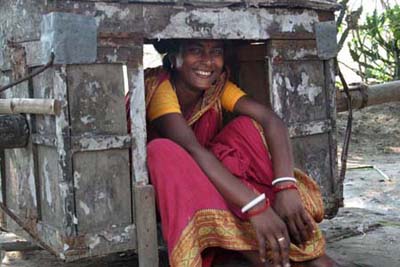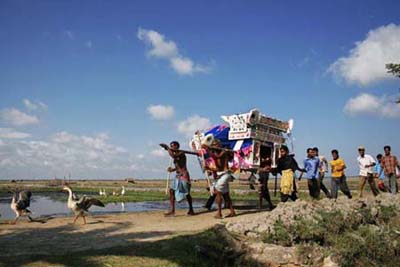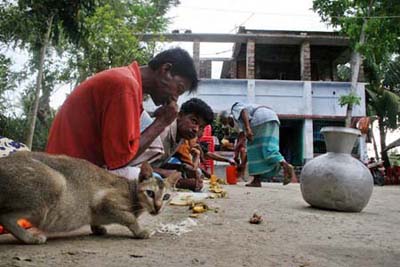
Only the skeleton of once majestic Rangs Bhaban remains hours after Rajuk shifted the demolition drive into gear on Friday.



Rajuk’s demolition worker puts hammer on the 8th floor of the building

Rajuk’s demolition worker with hammer on the 8th floor of the building

Try to save the glass sheet

Many took pictures of the structure against the bright sunlight on their mobile phones.
Photo: Shehab Uddin, August 03, 2007
The once splendid Rangs Building, stripped off of its splendor as The Rajdhani Unnayan Kartipokkho (RAJUK) started demolition drive beyond the fifth floor of the 22-storied building at Bijoy Saroni in the city on August 3, 2007 Friday morning amid tight security. The demolition drive began a day after the owners of this huge building lost a long-drawn legal battle on Thursday, August 2, 2007 in the Supreme Court as a 5-member bench of the Appellate Division headed by Justice M Fazlul Karim, delivered its verdict to demolish 16 floors out of 22 of Rangs Bhaban as it is situated in fly zone where about 6 floors allowed only.Another strong reason is to make a link road to reduce traffic in Bijoy Sharani area. The Govt. should acquire Rangs land including more than 100 lands back of Rangs Building.
The “monument” was built during the rule of the then President HM Ershad and later on raised up to 22nd storey at a cost of Tk 700 crore.
Meanwhile, fresh disputes arose between Rajuk and the building authorities on marking the ‘upper area’ for demolishing. Rajuk said they would demolish all the floors beyond 60 feet of the building while the building authorities said the Supreme Court ordered destruction of the upper 16 floors of the building.
RAJUK workers began demolition work stripping different floors of window panes by breaking glittering glass walls, inner side walls and other expensive interiors, from the sixth floor but the main structure was untouched. It will take at least three months to demolish the illegal Rangs Bhaban. Over 300 police and RAB personnel were posted at different floors and in front of the Bhaban with a view to maintaining the security in and around the Rangs Bhaban. Hundreds of curious onlookers gathered all around the Rangs Bhaban throughout the whole day while the demolition was continuing.
Source: Internet.









